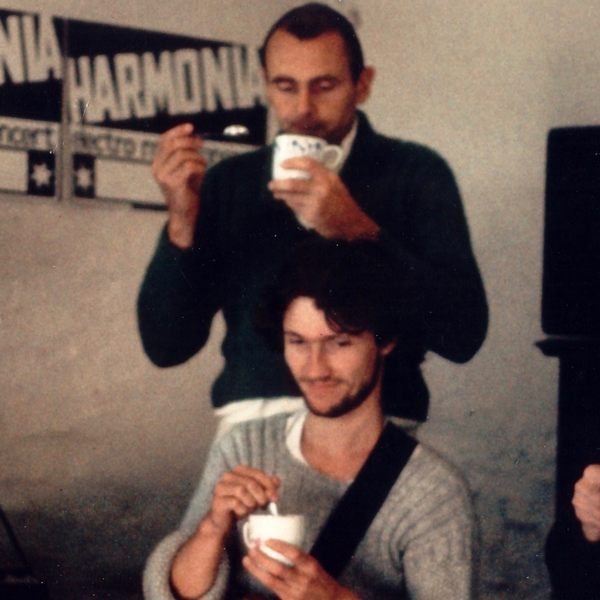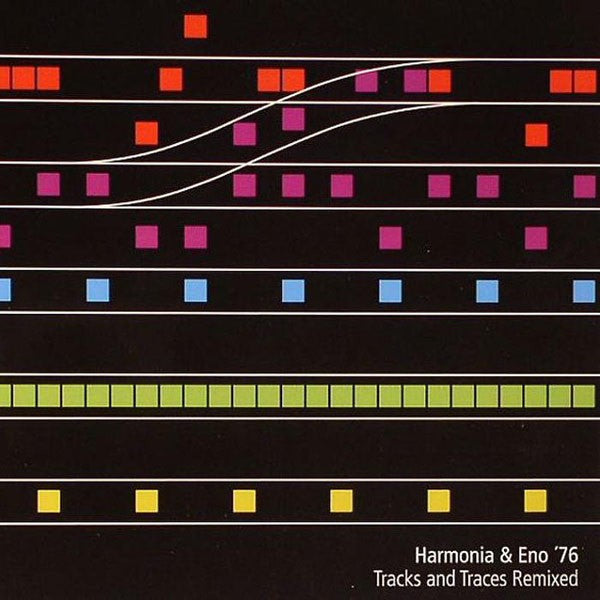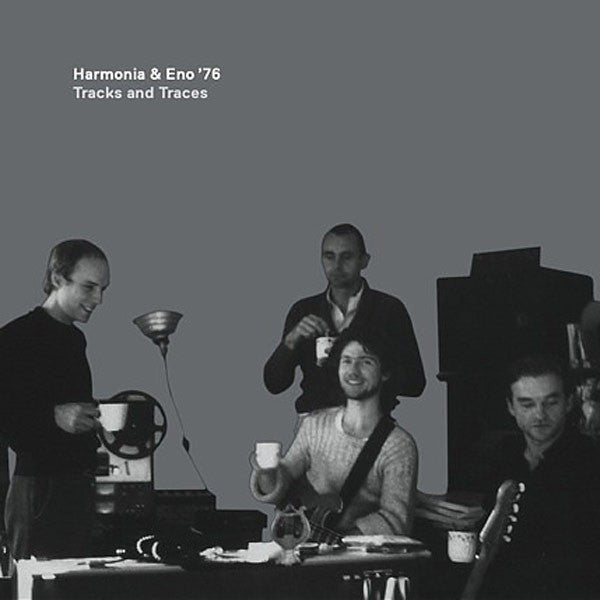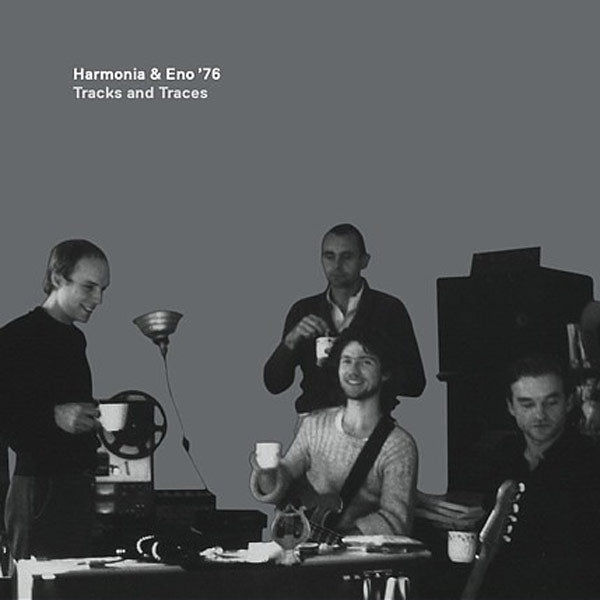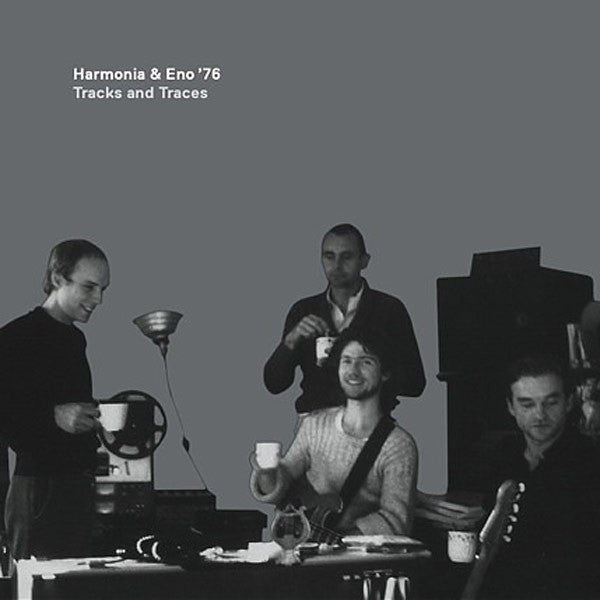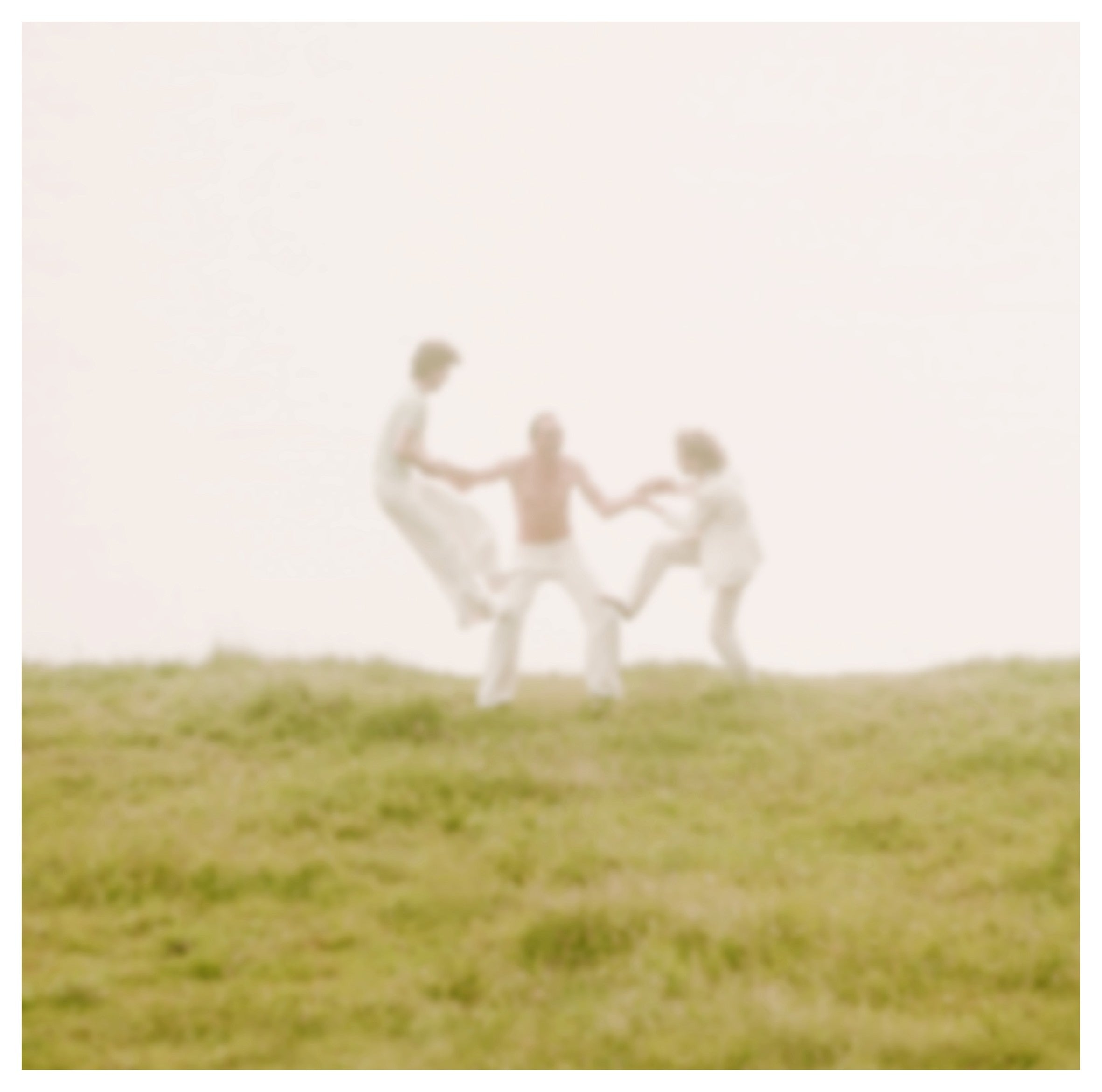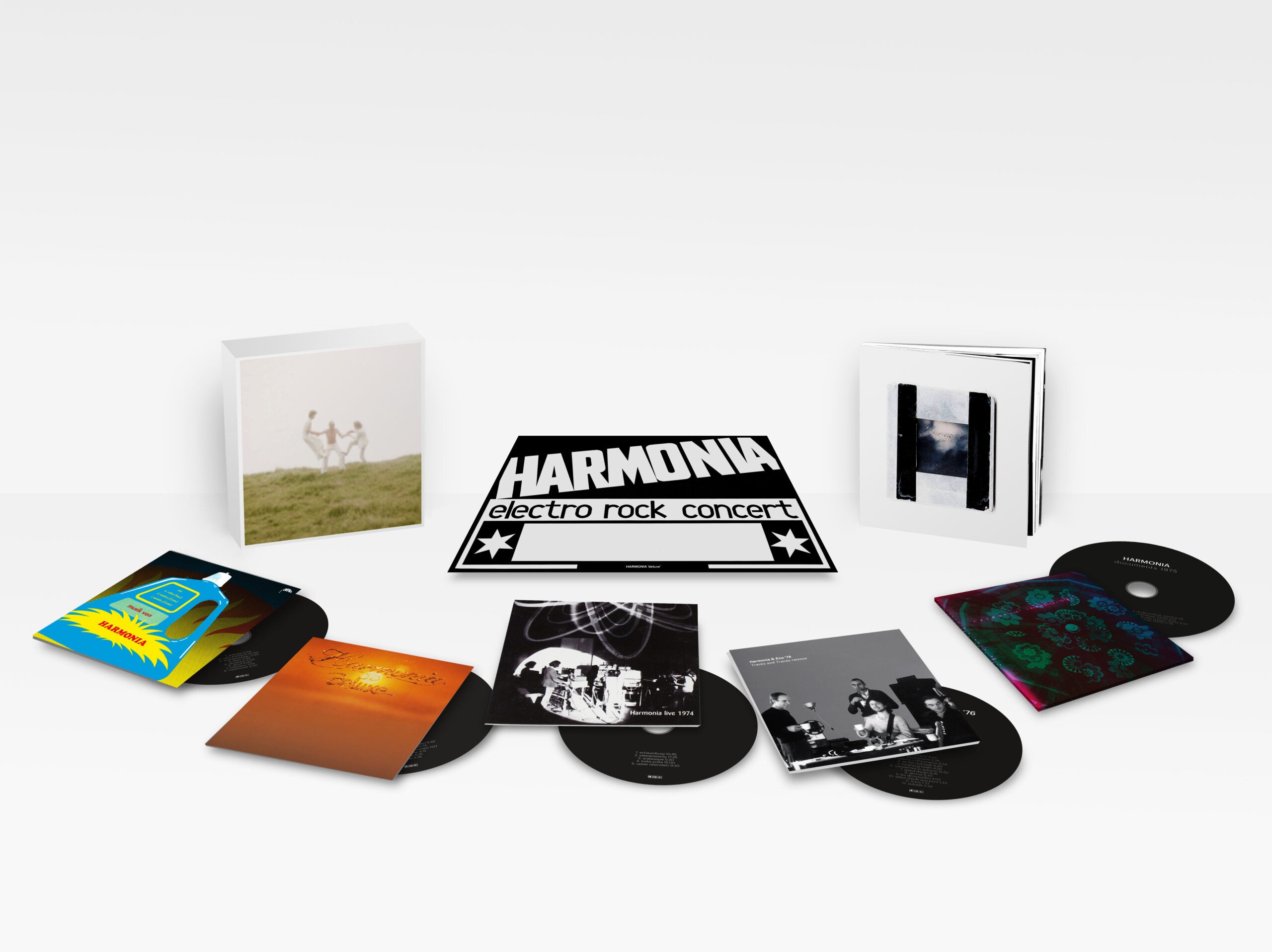Harmonia & Eno 76′
Magical moments are not created at the push of a button, they simply happen by chance.The musicians of Harmonia Such a moment came completely unexpectedly in late summer 1976. The band had two albums behind them at that time, "Music by Harmonia"(1974) and "Deluxe"(1975). Both works are now considered classics of Krautrock and electronic music, but after that the joint plans ended. All three musicians were restless and developed ideas for solo albums. Michael Rother realized it with "Flaming Hearts",Hans-Joachim Roedelius with "Through the Desert" and Dieter Moebius with "Lilienthal" But then a certain Brian Eno on the plan.
Harmonia didn't even exist anymore - until Brian Eno came along and asked "Is it OK now?"
He already knew about Harmonia In 1974 he even spontaneously joined the band at a concert in the Fabrik in Hamburg. The musicians immediately expressed interest in further collaboration and exchanged numbers. Two years later, Eno by phone Harmonia and asked: “Does it fit now?” The answer: Hmm, actually not quite… – because we just broke up as a band – ahem, yes, of course it fits!
Eno was on his way to Montreux to David Bowie to "Low" The man knew his way around the elite of rock music, performed in the studio in the countryside in forest in the Weserbergland, however, it is very modest.
"Eno didn't come across as an aloof rock star at all, on the contrary, he was very pleasant and interested. We met on equal terms and were a collective that simply wanted to make music, free from commercial ulterior motives and the pressure to record an album. For me, these are the best working conditions you can imagine," says Rother.
"With Eno A spirit with great openness, endless joy of playing and an enormous wealth of experience in the field of popular new music came into play, and this was apparently able to open the already closed door,” adds Roedelius. Nevertheless, the public has not heard of these recordings for a long time, partly because they were not intended for commercial use, but also because the original tapes were Eno were long considered lost. Fortunately, Roedelius and Rother had made copies of the four-track tapes.
The tapes of the recordings were long considered lost.
1997 appeared out of the blue Harmonia-Album "Tracks & Traces" with excerpts from the legendary 76 sessions. Roedelius had examined the material in his possession and had it edited in a complex technical process. "All I did was to technically improve the original material (one of the three four-track tapes that we had recorded at the time) with Austrian sound engineers so that the tracks could be listened to by other listeners than us," recalls Roedelius “Due to disharmonies in the band, Achim put the music together on his own,” explains Rother. “The nine titles from 1997 are therefore also an expression of his personality in their atmospheric weighting. Möbi and I were not happy about Achim's solo effort, but we had to admit: You did well! At least we agreed on the titles and the artwork, Möbi and I were involved in a certain way (laughs). But there is nothing to say against the music, it is wonderful.” One can only agree with that. Boldly rushes into "Vamos Compañeros" a groove in the form of a repeating steam locomotive sound. After the idyllic detour "By The Riverside" it immediately goes into an experimental-abstract phase with a dark undertone. A warning finger is raised: “Don’t get lost on Lüneburg Heath!” After a "Weird Dream" The mood brightens up again, you hear warmer, pop-like chords and the later works Enos known, but here by Rother played slide guitar. But of course that wasn't all.
Michael Rother also had a copy of the tape.
Rother still had his copy in reserve, which had been in his studio since 1976. One day he also decided to digitize the fragments contained therein, 27 in number. A whole album could possibly be made from this, but it was agreed to use three pieces as a supplement for the re-release of the 1997 album. "First I asked myself what makes musical sense, which of the many pieces do I particularly like and reflect the musical range of our collaboration with Brian Eno best. The second step was to properly integrate the selected pieces into the existing album. I suggested not putting them at the end as bonus tracks as usual, but changing the structure and playback order. Fortunately, everyone involved agreed to this." With the entree "Welcome" and the following track "Atmosphere" The album now slowly builds up before continuing with "Vamos Compañeros" in the usual form. In the end, "Aubade" the impression of a conciliatory ending.
And how to “Harmonia & Eno 1976 – Tracks and Traces” quality does not fade under these circumstances, even decades later.
So: start looking for clues, please!


